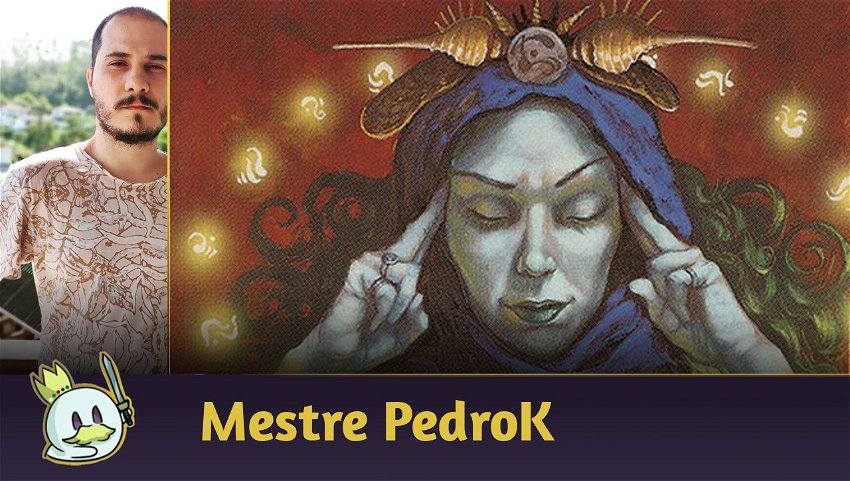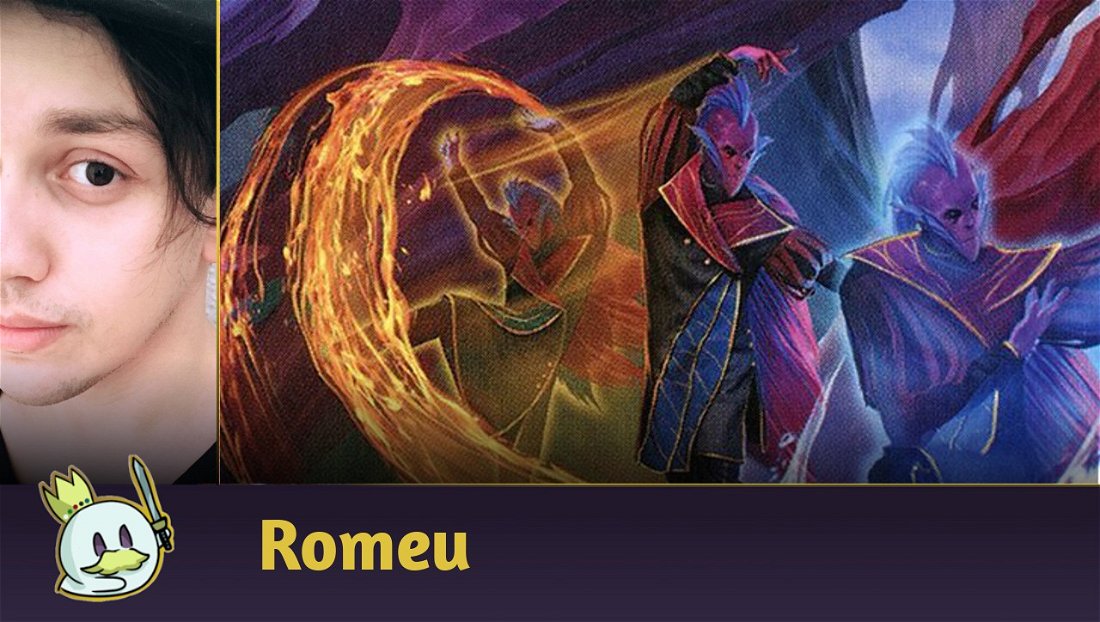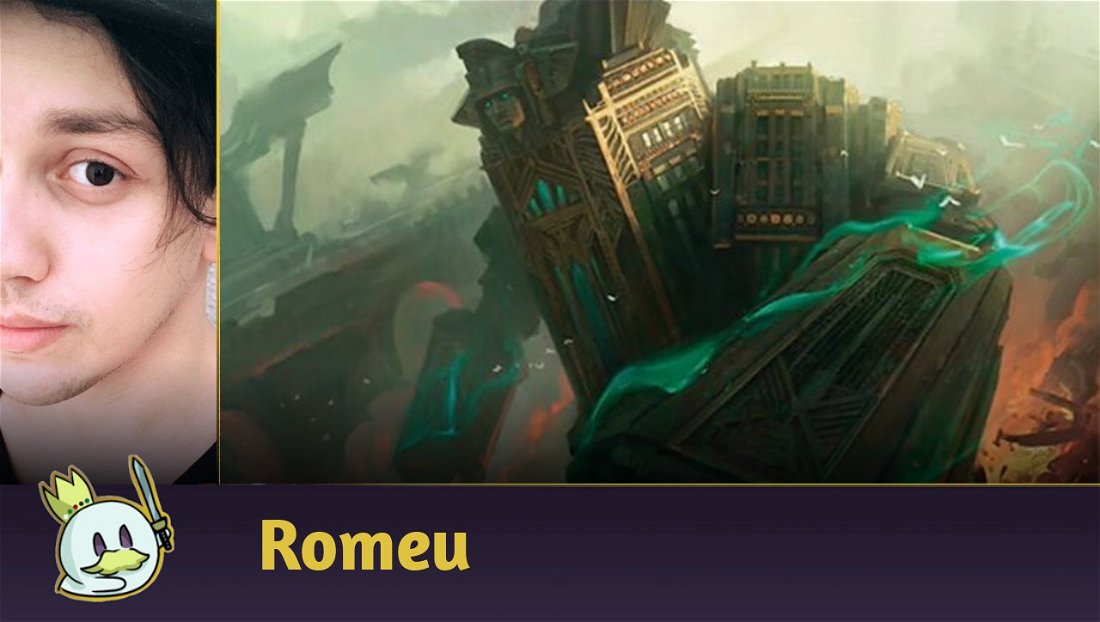Blue.
Red.
Brainstorm.
Lightning Bolt.
This combination of colors and spells has made their history in Magic since they were released, and helped cement the Blue-Red Tempo/Aggro deck. But were they the only ones responsible for this success?
In today's article, we present a bit of the deck's history since the format's launch in 1997 and its evolution over time, presenting strategies, evolution, issues and adaptations to consolidate the archetype as one of the most important within the format.
1997-2000: Efficiency
Legacy was born out of the need to play Vintage without the restricted cards. The first iteration of the format was simply to ban everything that was in Vintage, thus creating a healthier environment for players, considering how difficult it is to have access to these cards.
In this period, decks were focused on performing aggressive combos or using efficient creatures to win the game. At that time, blue spells were used to try to control the board, and red cards to establish pressure on the opponent. Still, the UR Tempo deck didn't exist as one of the format's main archetypes.
A prominent deck at the time was Five Color Black (also known as All 5 Black), which was even presented to the public as one of the 1997 World Championship decks.
The lack of really effective creatures and control spells made many decks unfeasible.
But everything changed with the arrival of some specific cards.
2001-2005: Splash
This was an experimentation period for eternal formats. The results in championships with great media coverage, such as the World Championship, made players in red and blue seek solutions to their problems in other colors.
Black could bring hand disruption.
Green had powerful creatures
White was flexible between removals and sideboard pieces.
Decks like Nether-Go brought the philosophy of Tempo decks to a different pace of play. This deck was extremely effective and very difficult to respond to.

It was during this period that some spells established themselves once and for all as recurring for a “fast-tempo” archetype: Counterspell and Opt.
The mana efficiency of a cantrip coupled with a low-cost control spell and great versatility have made tempo decks even more versatile within the meta.
Still… something was missing.
That was, until 2005.
2005 - 2010: Threshold
In 2005, we had two important Legacy tournaments at the international level: Grand Prix Philadelphia in November and GP de Lille a month later.
It was in these two tournaments that one of the main Legacy archetypes was consolidated for a long time: the Threshold.
Focused on casting fast, cheap spells to fill the graveyard, this deck used Odyssey's Threshold mechanic to play efficient and powerful creatures, such as Nimble Mongoose and Werebear.

The efficiency of these creatures added to the casting speed of excellent spells such as Brainstorm, Lightning Bolt, Daze and Force of Will would be enough to consolidate this deck as one of the main competitors of the format at the time, even displacing the RW Slide and UW Control.
The strategy naturally evolved, and variations with other colors became possible. Cards like Tarmogoyf and Dark Confidant were quickly included in this strategy, and the deck dominated Legacy for a while.
2011: Delver of Secrets
Delver of Secrets and Snapcaster Mage took the archetype to the roof. It was now finally possible to play with only two colors and have an efficient creature on the first turn and have graveyard recursion in blue.

These two extremely efficient cards were combined with low-cost cards focused on responding to the Metagame and, with that, made one of the most agile and “tempo-oriented” decks ever seen: Izzet Delver.
The presence of powerful 2-mana cards such as Stoneforge Mystic, Dark Confidant and Tarmogoyf, made Izzet Delver exploit cards like Spell Snare.
For many times, starting off with Delver of Secrets backed up by Force of Will, with Brainstorm at the Upkeep to ensure that Delver flips and have a Spell Snare to counter the opponent's threat was enough to win the game.
2012-2014: Adaptations
Over the next few years, UR Delver will undergo some adaptations to respond to the format. Some players decided to bet on speed, reducing the number of lands to 18 and playing with as many fetchlands as possible. Others bet on versatility, and put Stoneforge Mystic in the deck along with True-Name Nemesis to guarantee a win in longer matchups.
But the huge surprise is the adaptation of the archetype to return to the Canadian Threshold (URG). Delver feels like a natural addition to the established archetype, and the mindset of an aggro-tempo deck fits perfectly with the strategies already developed for both archetypes.
2014: Dig and Cruise
For a moment, Legacy revolved around two cards: Treasure Cruise and Dig Through Time. Two blue cards that used the Delve ability to draw/select cards. Any Legacy deck was much better with these two cards, as you essentially had access to many more cards in your deck.
It was absurd. Sneak and Show, Reanimator, Miracles and even Lands were using these spells to improve their chances of winning. With UR Delver, it was no different.
The strategy became so famous that, in one Star City Games championship, commentators even calculated how many Volcanic Island were in the championship and speculated on how much that would represent to the total amount of Volcanic already printed. At this time, the discussion about the veracity of old cards resurfaced, and some articles were published on the subject.

Applying the strategies already used, UR Delver managed to consolidate itself as one of the main archetypes during this era, mainly due to the presence of another card: Monastery Swiftspear. Izzet decks now had two powerful threats on turn 1. Gitaxian Probe also proved to be an important card for the deck, as it was a “free spell”. Some decks even used Dismember to increase their odds of dealing with threats.
2015 - 2018: Grixis
Over time (and after a few bans), Izzet returns to its origins, with a fast, low-cost and efficient deck. To respond to the Metagame back then, UR incorporated black in the deck, establishing itself as the “deck to beat” for a long time.
In 2018, we had the presence of Eldrazi decks in the format, and Grixis was one of the few decks with an excellent game 1. Hand disruption, counterspells and cheap and efficient creatures were, for a long time, enough to guarantee wins in the best first game of three.
2018 - 2020: Four-Color
Those years were interesting. The classic UR Delver still existed, but it gets even stronger with Dreadhorde Arcanist.
Again, the ability to use the graveyard efficiently became the archetype's main focus. What was interesting, however, was the adaptation of the aggressive deck to a more controlling shell.
The 4CC (Four Color Control) is born.
Playing anything but white or anything but black, the 4cc makes the game slower and more responsive. Slowly, the Aggro deck becomes Tempo. Gradually, Delver is removed from the deck, and now it changes from Tempo to Control.
This change causes the “UR Aggro” or “UR Tempo” deck to transform into an entirely different archetype. A lot of UR Aggro players switch to this deck because they basically had access to all mana and all spells available. The deck incorporates efficient cards from other formats and from recent releases, becoming the archetype who “answers to everything”.
With the massive presence of this type of deck, Grixis Tempo reappears here and there, but far from the dominant presence it once was.
But that would change when players started channeling the dragon within.
2021 - Present: Channeling the Dragon
This card ended up replacing Monastery Swiftspear and/or Delver of Secrets as the main turn 1 threat in the deck. If that wasn't enough, Murktide Regent sealed the deck as the main mid-game threat, requiring almost immediate answers or taking the game quickly.
We had Ragavan, Nimble Pilferer in attendance for a while, but it got banned.
The important thing is that the deck hasn't changed much. An interesting analysis is to compare the deck from now, 2022, with a deck from 2011. There are 11 years of difference, but the similarities are huge. In addition to lands such as fetches and old duals, we have the presence of many repeated cards in both lists:

2022 - Future: Efficiency? Speed?
It's hard to think what's new for such a consolidated deck. We probably won't get the printing of cantrips as efficient as Brainstorm and Ponder. I can't see a more powerful counterspell than Force of Will. To be honest, it's hard to imagine low-cost creatures as efficient as the ones we have today.
The future seems uncertain, but analyzing what we've had so far, it's possible to conclude that we will have the inclusion of cards designed for eternal formats. The power level of Modern Horizons 2 made it clear that it was really made to impact formats with higher power levels.
Another possible option is the printing of cards in other colors that expand the range of possibilities of Izzet Aggro/Tempo. This option seems more realistic to me, as we've seen this happen before in history.
Well, only the future knows what it has in store.
If only we had the possibility to cast a Brainstorm to look at the top...















— Comments 0
, Reactions 1
Be the first to comment